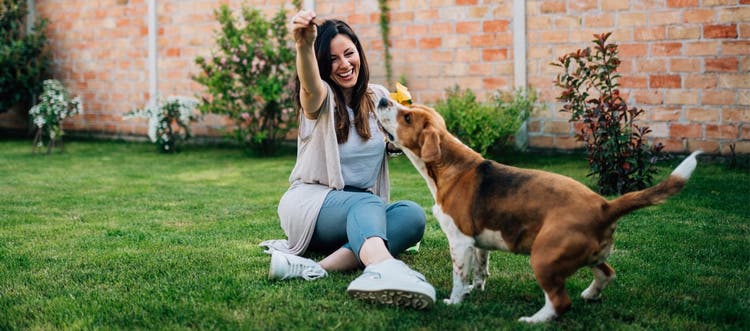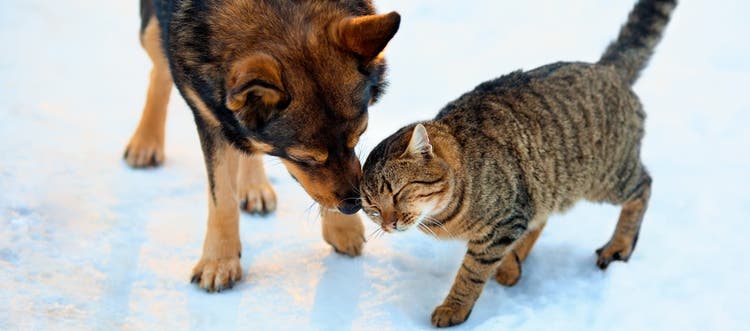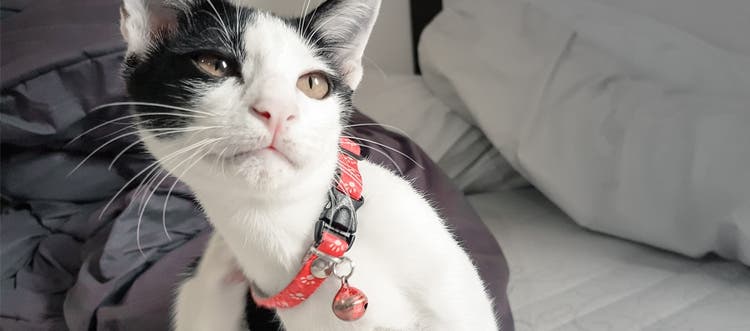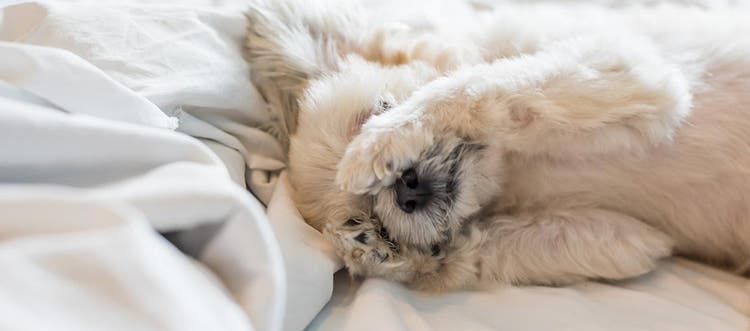A flea infestation can irritate everyone in your household; these parasites don’t mind who they bite. Learn how to help get rid of fleas in your home.
It’s bad enough to find a few fleas in your home, but it’s even worse when you realize there may be a lot more. In fact, by the time you actually see a flea, there’s a good chance you have a full-blown flea infestation in your home — and flea bites can be annoying and dangerous for both your family and your pets. Here’s how to help get rid of fleas in your home.
How to Get Rid of Fleas in Your House
The adult fleas you can see around your home or on your pet make up only 5% of a flea infestation. Flea eggs, flea larvae and pupae hiding in your home and in your yard account for the other 95% — which makes it important to take steps to get rid of fleas in every part of the house.
1 How to Get Rid of Fleas on Your Pet
First, treat the fleas on all pets and other animals with a fast-acting flea treatment. Even if you’ve only seen fleas on one pet, there’s a good chance other pets have picked them up, too. Getting rid of any fleas hitching a ride on dogs and cats will help limit their spread around the house — even if you have an indoor-only cat or a homebody dog. Plus, keeping your pets on a year-round flea prevention schedule can help prevent infestations before they happen.
Fact Check: Does Dish Soap Kill Fleas?
Puppies or kittens too young for flea treatment products may benefit from a DIY dish soap flea bath. Dilute a small amount of dish soap with water to kill adult fleas on your pet, and then use a flea comb to remove any remaining fleas. Keep in mind this hack can irritate a pet’s skin and is only effective against adult fleas — not the other three life stages — so it should only be used in rare instances when dog shampoos and cat shampoos formulated to treat fleas aren’t an option for puppies and kittens younger than 12 weeks.
2 How to Get Rid of Fleas in Bedding
Wash your family’s bedding and your pet’s bedding, including covers and inserts, in hot water, or treat these items with a household flea spray. The hot water will help kill fleas and flea larvae and remove flea dirt (a food source for immature fleas).
Wash bathroom rugs and throw blankets, too — any places your pet likes to sleep or lounge. This is an essential step for eliminating all life stages of fleas. Be sure to wash bedding on a regular basis until the infestation is cleared.
3 How to Get Rid of Fleas in Carpet
Vacuum floors, carpets and area rugs. Immediately empty your vacuum cleaner and dispose of the bag after each use to prevent eggs from possibly hatching inside, which could lead to future flea infestations. Vacuum regularly, especially in areas that pets frequent, until the infestation is cleared.
Fact Check: Does Salt Kill Fleas?
While some blogs may recommend sprinkling pantry items such as salt or baking soda on carpets to dry out flea eggs and larvae, there’s no evidence that baking soda is effective at all, and the amount of salt needed to make a difference could be toxic to your pet. It’s best to stick with vacuuming and flea spot sprays for carpet.
4 How to Get Rid of Fleas on Furniture and Upholstery
Thoroughly vacuum and then use a spray labeled for flea treatment on upholstery, furniture and crevices. Make sure to follow the instructions and treat all your pet’s favorite spots. Read the label closely to avoid exposing your pets while you treat your home.
5 How to Get Rid of Fleas in Hiding Places
Fleas can hide in cars and cabinets — but people often forget about these spaces. Remember to vacuum any fabric surfaces inside your car, and make sure your pet sits on a blanket that can be changed and washed regularly. Treat cabinets by vacuuming and following up with a flea spray.
Clean all of your dog’s or cat’s soft toys. Even your dog’s beloved squeaky plush or your cat’s toy mouse could be home to flea eggs and larvae. If these toys can’t be washed, they may have to be thrown away.
Finally, use a flea fogger in your home after you have treated your pet, cleaned the house and washed all bedding. Choose a fogger that kills multiple flea life stages, and always follow all label directions. Before fogging, you may need to move indoor plants outdoors, unplug all electronic devices and make plans to be away from your home for the time indicated on the label directions.
How to Know If the Fleas Are Gone
Your house is finally clean — but how can you tell if the fleas are gone? There’s no sure-fire way to know, but you can monitor your pets for scratching, chewing, hair loss and touch sensitivity as signs that fleas have returned.
How to Help Keep an Infestation from Coming Back
You may have worked hard to get rid of fleas in your home, but the entire cycle can repeat — and it may take a few months to stop the infestation. Stay vigilant! All your hard work could be undone by wildlife in your yard, a puppy play date or unhatched eggs that survived the first round of cleaning. Repeat the above steps as necessary until you no longer find fleas in your house.

Advantage® Household Fogger
Reaches fleas and other listed insects hidden in places you can’t see, such as carpets, rugs, drapes, upholstery, pet bedding, floor cracks and open cabinets. The fogger kills adult and preadult fleas, including flea eggs, for 7 months. It also kills hatching fleas before they grow up to bite.

Advantage® Carpet & Upholstery Spot Spray
Help control an infestation in your home by killing fleas, brown dog ticks, dust mites and bed bugs. Not for use on pets. Use as directed.

Advantage® Household Spot & Crevice Spray
Kills fleas, dust mites and brown dog ticks in hard-to-reach places in your home. Not for use on pets. Use as directed.
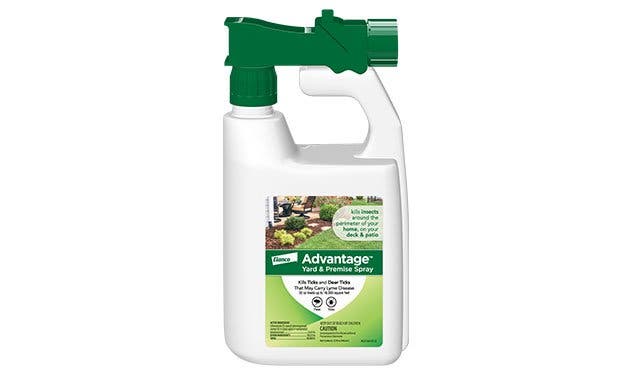
Advantage® Yard & Premise Spray
Kills fleas, ticks and other insects in your yard and around the perimeter of your home. Not for use on pets. Use as directed.

